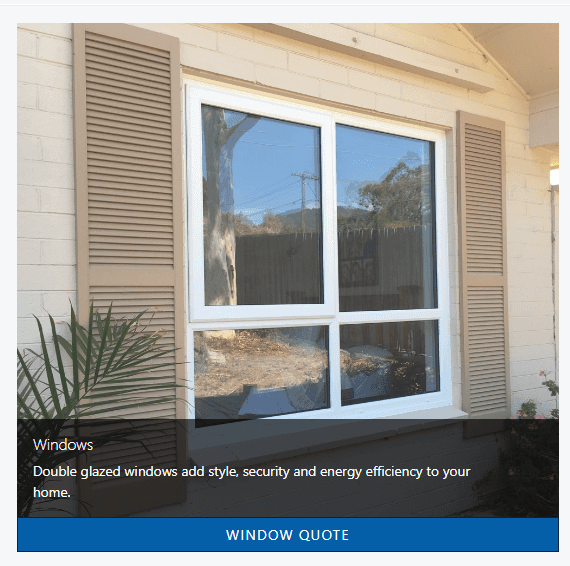The Decline of Solar Feed-in Tariffs in Victoria: Why Energy Efficiency Matters More Than Ever

Based on data from solarcalculator.com.au
In recent years, solar feed-in tariffs (FiTs) in Victoria have fallen sharply, reducing the financial returns once promised to homeowners who invested in solar power systems. Where households could once rely on solar exports to reduce their electricity bills, today’s conditions paint a very different picture. This shift highlights an important truth: reducing energy use is now just as important as generating it.
This is where Ecostar Double Glazing becomes a powerful part of the solution.
What is a Feed-in Tariff?
A feed-in tariff is the payment solar system owners receive from their electricity retailer in exchange for surplus solar energy that is exported back to the grid. These tariffs were originally designed to encourage solar adoption and reward households for their contribution to clean energy production.
According to solarcalculator.com.au, the average minimum feed-in tariff in Victoria for the 2025–26 financial year is now just 1.2 cents per kilowatt hour. In some cases, retailers are offering 0 cents, which is now allowed due to changes in regulation. Just two years ago, the regulated minimum was 4.9 cents, showing how much the value of solar exports has dropped in a short period of time.
Feed-in Tariff Trends in Victoria
The Essential Services Commission (ESC) no longer sets the minimum rate. Instead, electricity retailers are free to decide what they pay their customers, as long as it is not below zero. This has created a competitive but unpredictable environment, where the value of solar exports depends entirely on who your energy provider is.
The historical data paints a clear picture:
Financial Year Minimum Feed-in Tariff (c/kWh)
| 2018–19 | 9.9 |
| 2020–21 | 10.2 |
| 2022–23 | 5.2 |
| 2023–24 | 4.9 |
| 2024–25 | 3.3 |
| 2025–26 | 0.0 (average minimum 1.2) |
This decline reflects increased rooftop solar adoption, lower wholesale energy prices, and the grid being oversupplied with daytime solar exports. As more households generate energy at the same time, the value of that energy continues to drop.
The Problem with Relying on Solar Exports
Most solar households generate more electricity than they use during the day and send the rest back to the grid. However, when the feed-in tariff is only 1 or 2 cents per kilowatt hour, this exported energy provides very little financial benefit. Meanwhile, energy consumed from the grid is still charged at much higher rates – often between 30 and 45 cents per kilowatt hour.
This means households are effectively selling power for cents and buying it back for dollars. It is no longer a sustainable model on its own.
Why Double Glazing is More Important Than Ever
With solar feed-in tariffs at all-time lows, the smartest way to save on electricity is to reduce the need for it. This is where Ecostar Double Glazing makes a real difference.
Double glazing helps homeowners retain heating and cooling inside the home by significantly reducing heat transfer through windows. This means:
- Lower heating bills in winter
- Reduced air conditioning costs in summer
- Greater comfort throughout the year
- Less reliance on exported or grid energy
- Savings that apply day and night, regardless of the weather or sunlight
Unlike solar panels, which only produce energy during the day, double glazing works 24/7, making it one of the most effective energy efficiency upgrades available.
A Smarter Combination
For homeowners with solar already installed, adding double glazing is a way to boost overall energy efficiency. Rather than depending solely on export returns, homeowners can reduce the total energy their household needs in the first place. For those without solar, double glazing still delivers long-term savings by cutting electricity use at the source.
Together, solar and double glazing create a smarter, more balanced approach. Solar panels help generate clean energy, while double glazing ensures that energy is not wasted through poorly insulated windows.
Conclusion
The sharp decline in Victoria’s solar feed-in tariffs is a clear signal that relying on energy exports is no longer enough to reduce electricity bills. Homeowners now need to think differently and look for ways to make their homes more energy efficient from the inside out.
Ecostar Double Glazing offers a proven solution that delivers immediate comfort and ongoing savings, regardless of what happens in the energy market. With no moving parts, no maintenance, and performance that lasts for decades, double glazing helps homeowners take back control of their energy use – and their power bills.
Want to see how much energy your windows could be costing you?
Book a free consultation with Ecostar today and discover how double glazing can future proof your home.

